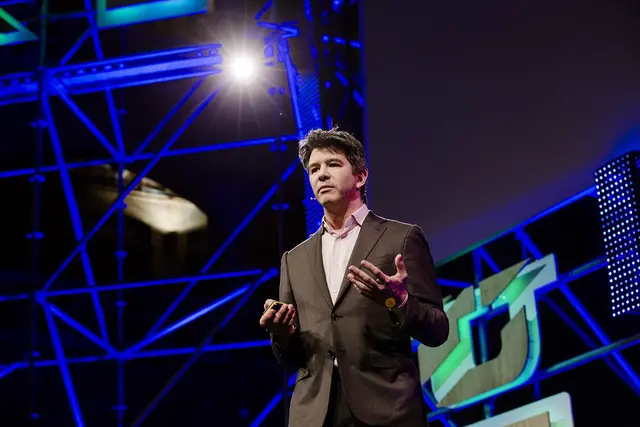Just when you thought Uber was done raising capital, more money flows in. A little over a week after taking a $3.5 billion investment from Saudi Arabia’s Public Investment Fund, The Wall Street Journal reports that the ride-hailing giant is raising as much as $2 billion from the leveraged-loan market. The unexpected new infusion of capital brings the total amount of money that Uber has raised to $15 billion in equity and debt—a stunning amount of money, even for the most valuable private-venture-backed tech company in the world. Uber, which is valued at $68 billion, is flush with venture capital and has more than 1 million drivers operating in 400 cities around the world, yet it’s raising money like it’s going out of style. All of which begs the question: What is Uber actually doing with all of that cash?
1.) Uber is fighting a multi-front battle. Some portion of Uber’s billions is going to marketing, driver payouts, and ride subsidies to attract new users to its platform. But another part of its war chest is going toward strengthening its global expansion, preparing for what could be a years-long fight against a panoply of foes. Uber is ahead of Lyft domestically, in terms of the number of cities in which it operates. But abroad, it faces challenges in the form of a global ride-hailing alliance, consisting of Lyft, which is valued at $5.5 billion; China’s Didi Chuxing, which just raised $7 billion—including a $1 billion investment from Apple—at a valuation of more than $25 billion; India’s Ola; and Singapore’s Grab. There are other, smaller competitors too, like the Middle East and North Africa-based ride-hailing service Careem.
2.) A scorched-earth campaign is expensive. Didi has presented a particularly vexing challenge for Uber. The two start-ups are locked in a financial race to the bottom in China. Both companies are burning through their respective cash piles to claim dominance in the country, but Uber is losing decidedly more money for less market share. A leaked pitch deck and financial statements reportedly showed that Didi Chuxing’s individual entities, Didi Dache and Kuaidi Dache, recorded operating losses of $305 million and $266 million, respectively, in the first five months of 2015. Uber, meanwhile, is said to be losing more than $1 billion a year in the People’s Republic. Uber touts the fact that it only took nine months of operation in Chengdu for the company to accumulate 479 times the number of trips it had done in New York City in the same length of time. But while C.E.O. Travis Kalanick has said that Uber accounts for between 30 and 35 percent of Chinese market share, Didi claims it holds 83 percent of China’s private ride-hailing market, and claims Uber holds just 16 percent.
3.) You can’t please everyone without spending big. Uber has also found itself squeezed between attracting both users and drivers to its platform. Rapid global expansion has required both subsidizing rides and keeping prices as low as possible. As a result, some drivers have found themselves disillusioned by the company’s promise to pay a livable wage, when the reality for many is closer to a minimum wage. While Uber has recently tried to appease its drivers with new policies like charging users a fee for keeping their drivers waiting, its business model is still dependent on ensuring that they remain independent contractors, without access to costly benefits like health care or retirement plans. In one recently settled lawsuit, Uber paid $100 million in a class-action settlement to drivers who felt they were deliberately misclassified as independent contractors when they were actually employees. The settlement allowed Uber to keep its contractor-based system in place, but highlighted the fragility of its underlying economics. The fact that Uber struggles to pay drivers adequately in even its most profitable markets is one reason the company is willing to pay any price to win enough market share to eventually raise prices.
It is no surprise then, that Uber is still wanting for cash. But Kalanick’s latest round is more strategic. Leveraged loans are an unusual vehicle for raising funding for start-ups—most investors aren’t interested in funding a company like Uber that may be losing money—and are typically used by private companies with “junk” ratings. But by raising a debt round now, the money-hungry start-up avoids diluting its existing shareholders’ stakes in the company by giving away more equity. In the long term, it’s inevitable that Uber will go public. Investors set limits and give terms to start-ups when they invest money in them because at the end of the day, they want to see a return. But public investors probably wouldn’t tolerate Uber’s high-growth, low-profit strategy, as do its private-market investors, who don’t expect Uber to earn a profit any time soon. For years, Amazon was able to pull off a similar trick, even going public while it was in the red, and it’s possible that will be Uber’s strategy, too.
(VANITY FAIR)
 简体中文
简体中文

